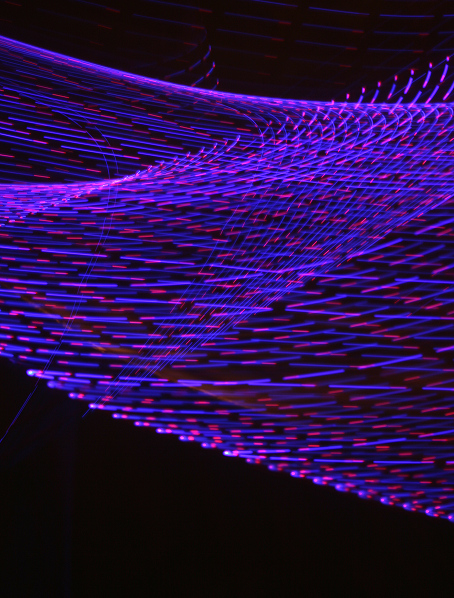
Signal Integrity
High-Speed Digital Design & Signal Integrity Definition: Services Explained
Ensure High-Speed Reliability from the Ground Up
As data rates rise in modern embedded systems, signal integrity (SI) and power integrity (PI) become critical to ensure your product performs as expected — without jitter, crosstalk, or EMI issues. High speed design is a core aspect of ensuring reliable system performance, as it requires careful attention to impedance control, PCB trace layout, and signal termination. Key factors such as power delivery, noise coupling, and network design significantly influence signal integrity and overall system reliability. High-speed PCB and system design present important considerations for engineers, as addressing these challenges is essential to avoid performance issues.
Promwad offers specialised services in high-speed PCB design and signal integrity simulation to help clients avoid costly respins, achieve compliance, and reach optimal performance in interfaces like DDR, PCIe, USB, HDMI, and Gigabit Ethernet.

Our Signal Integrity Services
Pre-Layout Simulation & Design Guidelines
- Transmission line analysis and impedance strategy, including identification and mitigation of impedance mismatch, impedance mismatches, and scenarios where impedance mismatch occurs
- Stackup definition and material selection (FR-4, Rogers, etc.)
- Topology selection for DDRx, SerDes, and LVDS
PCB Layout Review and Optimisation
- Use of advanced layout tools and review of pcb layouts to optimise signal integrity
- Differential pair routing optimisation, length matching, via minimisation, and careful handling of differential pairs for high-speed signals
- Routing traces for high-speed signals, ensuring proper trace geometry and spacing
- Crosstalk and return path integrity review, including strategies to minimise crosstalk, manage victim nets, and address coupling effects and coupling capacitance
- Stackup and routing optimisation considering adjacent layers, layer assignment, ground planes, and reference plane placement for signal and power integrity
- Power delivery network (PDN) decoupling analysis
- Routing is closely tied to component placement to achieve optimal power integrity
Post-Layout Signal & Power Integrity Analysis
- Signal integrity analysis as a core offering
- Simulations with IBIS models and component S-parameters, including detailed component modeling and analysis
- SI/PI co-simulations
- Eye diagram and time domain reflection analysis
Compliance and Test Support
- Design for EMC/EMI compliance (CISPR, FCC, CE)
- Controlled impedance PCB manufacturing support
- Lab support for scope-based signal quality validation
Typical Interfaces We Support
We adapt simulations and layout recommendations to your application — whether it’s industrial, telecom, automotive, or consumer electronics.

DDR3/DDR4/DDR5
Data Rates: Up to 6.4 GbpsSI Challenges Addressed: Reflections, skews, power noise

PCIe Gen 3/4/5
Data Rates: Up to 32 GT/sSI Challenges Addressed: Crosstalk, jitter, loss compensation

Gigabit Ethernet
Data Rates: 1–40 GbpsSI Challenges Addressed: Return loss, differential impedance

USB 3.1/3.2/4
Data Rates: Up to 40 GbpsSI Challenges Addressed: Stub length, connector modeling

HDMI / MIPI / LVDS
Data Rates: Multi-GbpsSI Challenges Addressed: Eye closure, crosstalk, skew balancing
Power Integrity Considerations
Power integrity is fundamentally linked to signal integrity in high-speed digital systems. A stable and clean power delivery network (PDN) is essential to prevent power supply noise from degrading the quality of electrical signals traveling across the circuit board. When power integrity is compromised, issues such as ground bounce, simultaneous switching noise, and signal distortion can arise, leading to significant signal integrity problems.
To ensure good power integrity, designers must carefully plan the PDN by selecting appropriate decoupling capacitors, managing impedance throughout transmission lines, and implementing effective grounding strategies. These measures help minimise noise and maintain consistent voltage levels for all components, reducing the risk of signal integrity issues that can disrupt the operation of digital systems. By prioritising power integrity alongside signal integrity, engineers can safeguard the performance and reliability of every signal path on the PCB, ensuring that all signals are delivered accurately and without unwanted interference.

Our Workflow
Whether you’re integrating a new high-speed interface or debugging SI issues on an existing board, we support you from design to verification for digital designs, high speed signals, high speed digital signals, high frequency signals, and high frequency systems.
1.Requirements Gathering
Identify key interfaces, length constraints, stackup limits, and analyse devices, device requirements, and clock rates.
2.Simulation Strategy
Define models, simulations, and design rules for SI/PI, including analysis of printed circuit boards, pcb traces, electromagnetic field and electromagnetic fields, and applying basic physics principles.
3.Layout Collaboration
Work with your layout team or provide full PCB layout
4.Validation & Test
Provide simulation reports, compliance support, and lab testing, capturing all the signals and other signals for thorough debugging and validation. Use a square wave for signal integrity validation.
Why Promwad?
Simulation expertise
HyperLynx, Sigrity, Altium PDN Analyzer, Ansys
Multilayer board design
8+ layer stackups, HDI, rigid-flex
Industry-specific experience
telecom switches, embedded vision, vehicle gateways
Manufacturing alignment
controlled impedance PCB production with vetted EMS vendors
Eye Diagram Analysis for Signal Quality
Eye diagram analysis is a cornerstone technique in signal integrity engineering, providing a clear visual assessment of digital signal quality. By overlaying multiple bits of a digital signal, the eye diagram reveals the effects of signal reflections, crosstalk, intersymbol interference, and noise coupling on the signal path. A well-defined, open eye pattern indicates good signal integrity, while a closed or distorted eye points to potential signal integrity issues such as signal distortion, jitter, or excessive electromagnetic interference.
Through eye diagram analysis, designers can pinpoint the root causes of signal integrity problems and make informed adjustments to circuit parameters. optimising trace width, controlling impedance, and refining termination strategies all contribute to minimising signal reflections and crosstalk. Additionally, maintaining robust power integrity and reducing noise sources are crucial for achieving a clean eye diagram. This approach ensures that digital circuits operate reliably, with minimal signal loss and distortion, even at high frequencies and data rates.

Start with Signal Integrity in Mind
Signal integrity is not just for aerospace and telecom — it’s essential for any system running at multi-GHz speeds.
Promwad provides complete SI and high-speed PCB design services to help your product meet reliability and performance targets — the first time.
Let’s simulate, verify, and deliver your next high-speed design.
Drop us a line about your project! We will contact you today or the next business day. All submitted information will be kept confidential.
